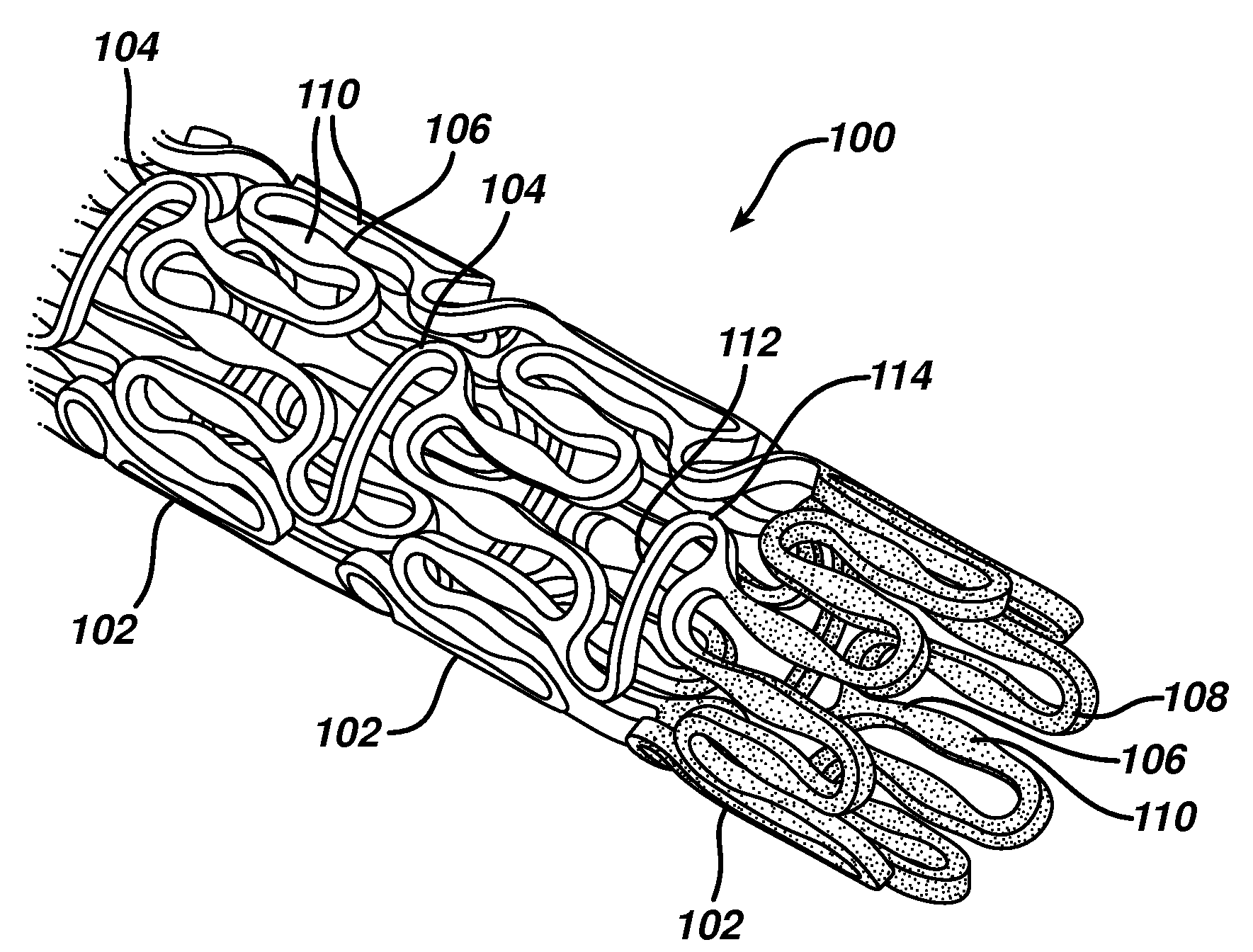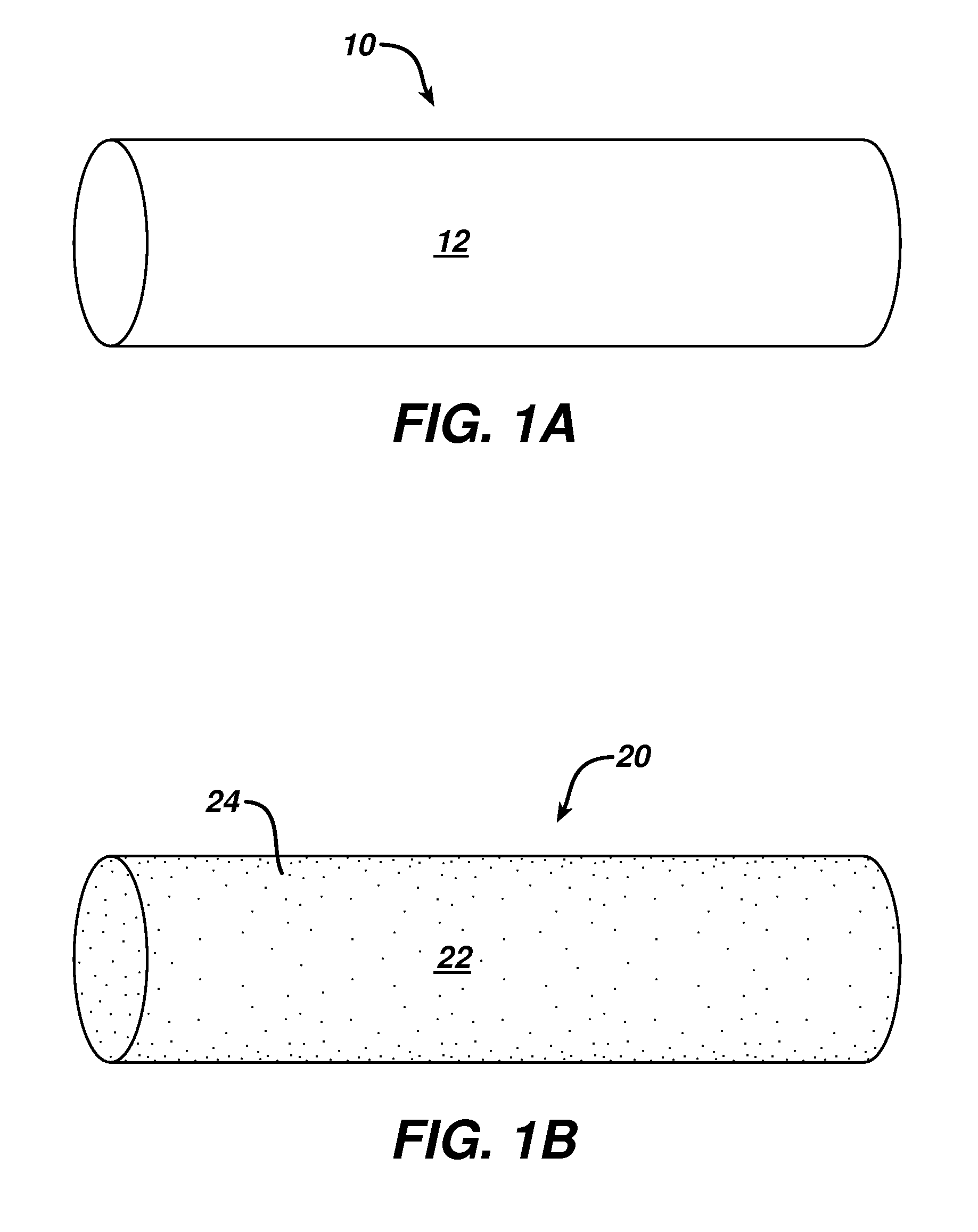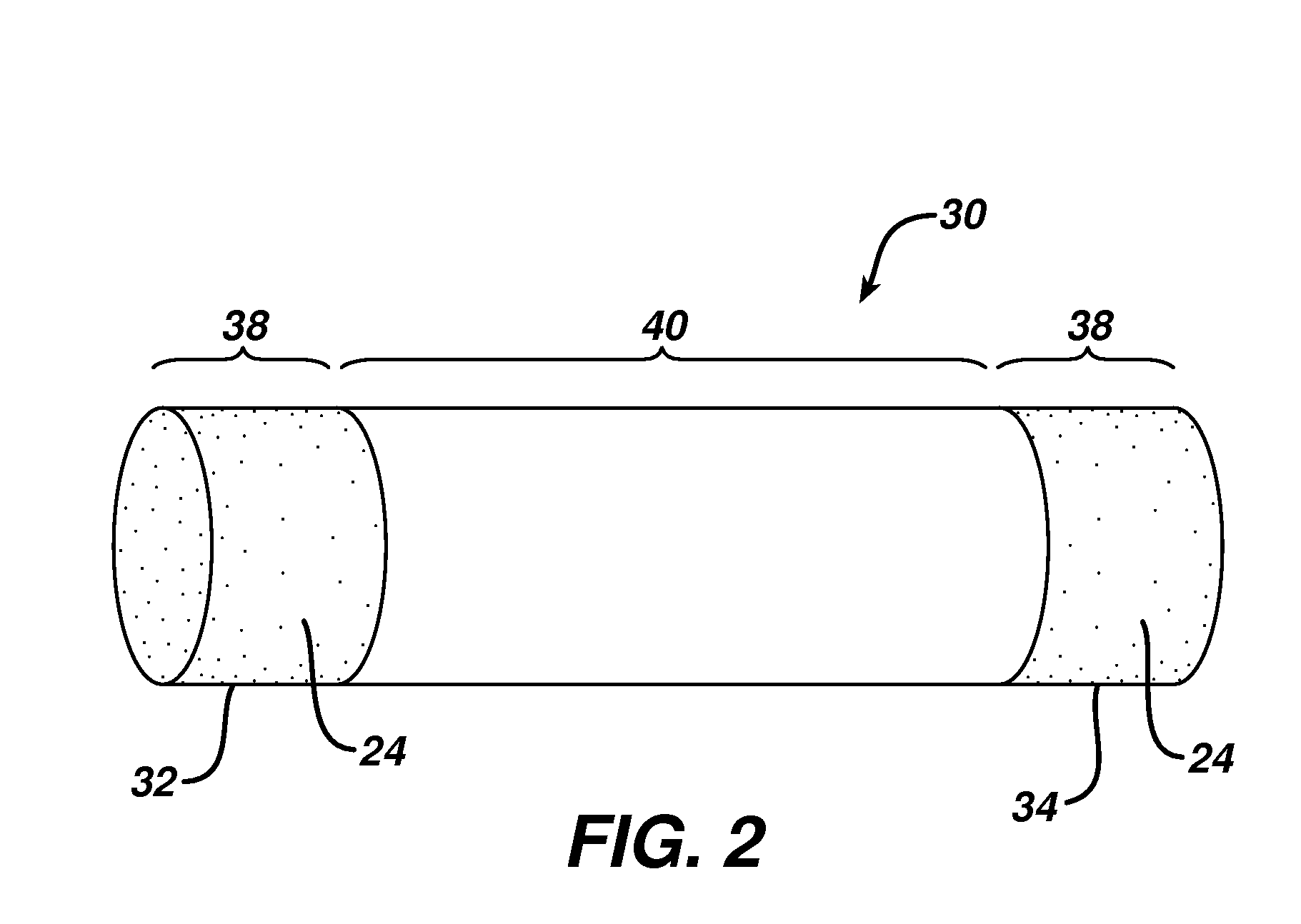Method for making a device having discrete regions
a technology of medical devices and regions, applied in the field of making polymeric medical devices, can solve the problems of inability to properly treat diseased sites, difficult placement of new stents, and loss of apposition, so as to increase the visibility of the device, increase the ability to deliver, and increase the effect of the device visibility
- Summary
- Abstract
- Description
- Claims
- Application Information
AI Technical Summary
Benefits of technology
Problems solved by technology
Method used
Image
Examples
Embodiment Construction
[0026]Implantable medical devices may be fabricated from any number of suitable biocompatible materials, including materials such as polymeric materials. The internal structure of these polymeric materials may be altered utilizing mechanical and / or chemical manipulation. These modifications may be utilized to create devices having specific characteristics such as crystalline and amorphous morphology and orientation.
[0027]In accordance with the present invention, implantable medical devices may be fabricated from any number of biocompatible polymeric materials. These polymeric materials may be non-degradable, biodegradable and / or bioabsorbable. These polymeric materials may be formed from single polymers, blends of polymers and blends of polymers and plasticizers. In addition, other agents such as drugs and / or radiopaque agents may be blended with the polymeric materials or affixed or otherwise added thereto. A number of chemical and / or physical processes may be utilized to alter the...
PUM
| Property | Measurement | Unit |
|---|---|---|
| Flexibility | aaaaa | aaaaa |
| Shape | aaaaa | aaaaa |
| Therapeutic | aaaaa | aaaaa |
Abstract
Description
Claims
Application Information
 Login to View More
Login to View More - R&D
- Intellectual Property
- Life Sciences
- Materials
- Tech Scout
- Unparalleled Data Quality
- Higher Quality Content
- 60% Fewer Hallucinations
Browse by: Latest US Patents, China's latest patents, Technical Efficacy Thesaurus, Application Domain, Technology Topic, Popular Technical Reports.
© 2025 PatSnap. All rights reserved.Legal|Privacy policy|Modern Slavery Act Transparency Statement|Sitemap|About US| Contact US: help@patsnap.com



